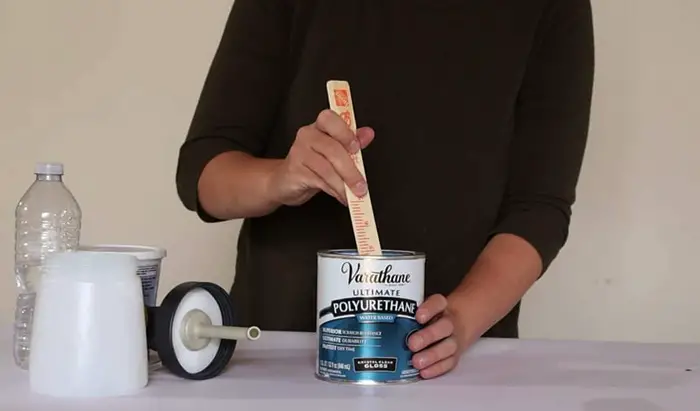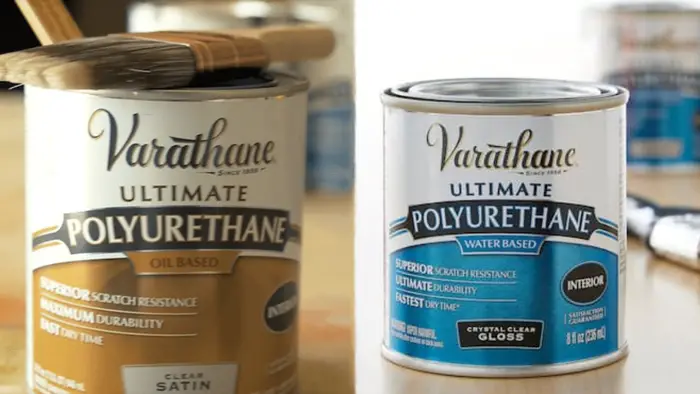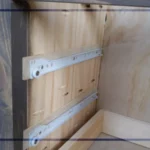How To Apply Water Based Polyurethane- A Complete Guide
Using a finish coat is not just time-consuming but also a costly investment. On the flip side, careless application of the water-based polyurethane coat can result in an unattractive and ruined finish surface.
So, how to apply water based polyurethane? You just need to prepare the surface of the material, sand it, clean it, apply the coat, and dry it. Moreover, the coat requires almost 20 days to cure fully. However, the application process is difficult, and each step requires proper observation and application of the perfect coat.
Well, the entire process can be quite a lengthy DIY process. To make it less of a burden, we came up with a detailed discussion of the application process. So, let’s check it out!
How To Apply Water-Based Polyurethane?
Applying the water-based polyurethane can become easy as long as you follow the procedure sequentially. The steps for applying the water-based polyurethane are described below for easy application.

Step 1: Clean The Surface
The surface where you will apply the polyurethane coat should be neat and clean. Remove the dirt by wiping it with a napkin. Afterward, use a wet napkin to clean the surface. Moreover, it leaves no residues of dirt as it can interrupt the application of the polyurethane coat.
Step 2: Sand The Surface
A smooth surface helps in penetrating the coat uniformly. Hence, sand the surface of the wood or floor.
A 220-grit paper is suitable to smoothen the imperfections on the surface. Still, you can use low-grit sandpaper first and later high-grit sandpaper to even out the whole surface.
Moreover, if the surface is already coated with a sealer or any other chemical, remove it, as it can be an obstacle to the adhesive property of polyurethane. Afterward, remember to clean out the dirt residue.
Here’s a YouTube video with some general tips on how to sand the surface for a beginner
Step 3: Choose The Tool
Generally, a brush or roller is used in order to apply the sealer coats. Well, practicing with a brush is more common since they can reach any part and even coat the smallest part of the material.
No matter what you choose, you need to ensure that the coat is applied uniformly.
Step 4: Mix The Polyurethane
Before applying the water-based polyurethane, you should stir the coat. Otherwise, bubbles can form while applying. Stirring also helps to mix out the coat and results in a uniform application.
Remember not to shake the can while working.

Step 5: Apply The Coat
To apply the polyurethane, first, dip the brush in water. Then, put on the coat.
Now, apply a thin layer of coat on the surface. The first coat should always be thin and uniform. Try to target the small sections and apply the coat with slow strokes of the brush.
Afterward, move to the edge. Do not leave any surface uncoated. And also, make sure that there is no uneven excess coat. Wipe off the bubble immediately if it forms.
Step 6: Drying And Sanding
Let the polyurethane coat rest and dry properly. Generally, the first thin coat becomes dried within a day. After drying, lightly sand the surface to smoothen out the uneven surface. Do not sand the surface unless it is completely dried.
Lastly, wipe out the surface to obtain a clean one.

Step 7: Apply Second Coat
Reapply a thin coat of polyurethane and follow the same application procedure as the first coat.
Step 8: Repeat The Process
Repeat the process after every coat, which is sanding and drying. At least three coats of polyurethane are required to obtain a good finish. It takes about 20 days to completely cure the coat.
After the last coat, let the polyurethane cure. After curing, you can finally keep the material in use.
Which One To Choose: Water-Based Polyurethane Or Oil-Based Polyurethane?

Both water-based polyurethane and oil-based polyurethane are suitable as a finishing coat. Still, there are slight differences between them.
- The oil-based coat has long durability. It is resistant to environmental conditions and chemicals. Also, it is heat resistant and can tolerate water damage. But all the facilities are costly. Moreover, it takes an oil-based coat to dry longer.
You must spend money and time getting a shiny and long-lasting finish.
- On the other hand, water-based polyurethane is cheap and takes a shorter time to dry than oil-based. Moreover, the application process is easy and hassle-free. Your slight mistakes during the application of the coats can be solved if you pay proper attention.
Additionally, the natural color of the wood remains intact due to the coat.
Still, the finish is not as resistant to environmental conditions as any other coat. Heat damage and moisture damage can be observed and you need to reapply the coat after every 2 years.
Both the coats have their own facilities. However, an oil-based coat is suitable for furniture, dark wood, and floors. On the other hand, for wood materials where color needs to be preserved, water-based polyurethane should be the priority.
How To Get Rid Of Bubbles In Polyurethane?

Well, you can protect the polyurethane coats from forming bubbles. But once the bubbles develop even after curing, there is less chance of fixing it.
- If bubbles are formed during application, you should simply pop them up.
- Or else wait for the coat to dry and sand the coat. It would commonly get rid of the bubbles.
- But when the coat is completely cured, and bubbles get visible, you need to reapply the coat. It is better to completely wipe off the coat of polyurethane and reapply following the correct procedure.
Tips For The Polyurethane Application

You can adopt certain precautions during the application for a perfect finish on the surface. So, let’s check them out.
- Always soak the brush in water in case of using water-based polyurethane. Rinse the excess water.
- Put the coat uniformly on the brush and get rid of the excess coat.
- Try to apply the coat with a single stroke in a small portion.
- Do not put pressure when applying the coat.
- Always even out the texture before applying the coat.
- Low-grit sandpaper can strip off any stubborn coat from the surface. So, be careful while using the sandpaper that you do not strip off the previous coat.
- Always wipe off the residue dirt after applying sandpaper to prevent uneven texture.
- Do not touch the coat without drying the coat completely.
FAQs
Let’s go through some of the frequently asked questions on this topic.
Q: How heat resistant is water-based polyurethane?
Generally, water-based polyurethane can tolerate temperatures up to 200 F. Still, the longer the coat is kept at a high temperature, the more chemical deterioration occurs.
Q: Can you apply water-based polyurethane in cold weather?
No. Applying the water-based polyurethane would not help in cold weather as the coat will take a long time to dry. Being resistant to cold temperatures does not mean the coat can be applied when the temperature is low. It needs enough temperature and time to cure.
Q: Does water stain polyurethane?
Yes. Though polyurethane is water-resistant, excess moisture can still penetrate through any coat. Especially when enough sealer is not added, there is a chance of getting the water stain.
Bottom Line
Overall, how to apply water-based polyurethane can require a few observations. Furthermore, you can eliminate the imperfections immediately as long as you observe each step.
Otherwise, you might waste both your time and energy in applying the coat and get a disappointing result. Additionally, you might need to reapply the coat. Well, if paying attention helps prevent such trouble, why not try the correct way?




